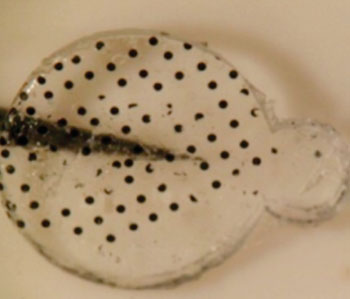Novel Nanofilm May Be Artificial Retina Precursor
By LabMedica International staff writers
Posted on 17 Dec 2014
Researchers have used advanced nanotechnology techniques to develop a light-sensitive film that has potential for future artificial retina applications.Posted on 17 Dec 2014
Investigators at the Hebrew University of Jerusalem (Israel) created a semiconductor nanorod-carbon nanotube based platform for wire-free, light induced retina stimulation. A plasma polymerized acrylic acid midlayer was used to achieve covalent conjugation of semiconductor nanorods directly onto neuro-adhesive, three-dimensional carbon nanotube surfaces. The nanofilm transforms visual cues to electric signals, mimicking the function of the photo-sensitive cells in the retina.

Image: This novel, flexible film that can react to light is a promising step toward an artificial retina (Photo courtesy of the American Chemical Society).
The new device, which absorbed light and stimulated neurons without wires or an external power source, was tested on light-insensitive retinas from embryonic chicks.
Results published in the October 28, 2014, online edition of the journal Nano Letters revealed that the implanted nanomembrane stimulated a neuronal response in the embryonic chick embryos following exposure to light.
Contributing author Dr. Uri Banin, professor of chemistry at the Hebrew University of Jerusalem, said, "This is a pioneering work demonstrating the use of highly tailored semiconductor nanocrystals in activation of biomedical functionalities. We hope this can lead to future implementation of this approach in retinal implants."
Related Links:
Hebrew University of Jerusalem













